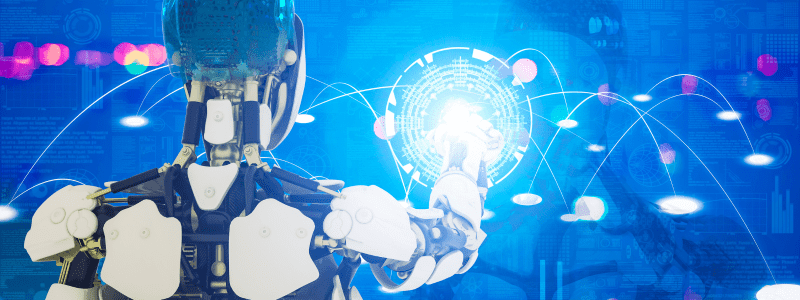Artificial Intelligence (AI) has been a buzzword for several years, and its influence is growing exponentially. From self-driving cars to voice-activated assistants, AI is transforming how we live and work. But is AI truly the future of tech innovation? Let’s explore this fascinating subject and see how AI is shaping our world and what lies ahead.
What is Artificial Intelligence?
Artificial Intelligence refers to the simulation of human intelligence in machines designed to think and act like humans. This includes problem-solving, learning, reasoning, and even creativity. The concept isn’t new; it dates back to ancient myths of automatons and mechanical beings. However, the formal development of AI began in the mid-20th century, with pioneers like Alan Turing and John McCarthy laying the groundwork.
The Evolution of AI Technology
Early Beginnings
AI’s journey started with basic algorithms and rudimentary computing power. Early AI could perform simple tasks but was limited by the technology of the time.
Major Milestones in AI Development
Key milestones include the development of neural networks in the 1980s, the advent of machine learning in the 1990s, and the rise of deep learning in the 2010s. Each breakthrough brought AI closer to mimicking human intelligence.
Current State of AI
Today, AI is embedded in various applications, from smartphones to smart homes. It’s capable of natural language processing, image recognition, and complex decision-making, proving its vast potential and versatility.
AI in Everyday Life
AI in Consumer Products
AI powers many consumer products, such as virtual assistants (Siri, Alexa), smart home devices (thermostats, lighting systems), and even personalized recommendations on streaming services.
AI in Services
Services like customer support, logistics, and even healthcare use AI to improve efficiency and accuracy. AI chatbots handle queries, while AI-driven logistics systems optimize delivery routes.
AI in Communication
AI enhances communication through tools like real-time translation apps, sentiment analysis in social media, and automated email responses, making global interaction smoother and more efficient.
AI in Business and Industry
AI in Manufacturing
In manufacturing, AI-driven robots and automated systems increase production efficiency, reduce errors, and enhance safety by taking over dangerous tasks.
AI in Finance
AI algorithms analyze market trends, manage risks, and even execute trades. AI-driven financial services offer personalized advice and fraud detection, making finance more accessible and secure.
AI in Healthcare
AI aids in diagnostics, treatment plans, and patient monitoring. Technologies like IBM Watson assist doctors by analyzing vast amounts of medical data to suggest treatment options.
AI in Retail
Retailers use AI for inventory management, personalized marketing, and enhancing the customer shopping experience. AI-driven analytics help understand consumer behavior and predict trends.
AI and Data Management
The Role of Big Data
AI thrives on big data, using vast datasets to learn and improve its accuracy. The explosion of data from various sources has been a significant driver of AI advancement.
AI in Data Analysis
AI excels in analyzing large datasets quickly, identifying patterns and insights that humans might miss. This capability is crucial in fields like finance, healthcare, and marketing.
Predictive Analytics
AI’s ability to predict future trends based on historical data helps businesses make informed decisions, anticipate market shifts, and optimize operations.
AI and Machine Learning
Differences Between AI and Machine Learning
While often used interchangeably, AI and machine learning are distinct. AI is the broader concept of machines being able to carry out tasks in a way that we would consider “smart,” while machine learning is a subset of AI that allows machines to learn from data and improve over time.
How Machine Learning Drives AI
Machine learning algorithms enable AI systems to learn and adapt. For example, a machine learning algorithm might analyze thousands of images to learn how to recognize a cat, improving its accuracy with each new image.
Examples of Machine Learning in Action
From spam email filters to recommendation engines on Netflix, machine learning applications are everywhere, continuously improving our digital experiences.
The Impact of AI on Employment
Job Creation vs. Job Displacement
AI automates repetitive tasks, which can displace some jobs. However, it also creates new roles in AI development, maintenance, and oversight, necessitating a shift in the job market.
New Career Opportunities
Fields like data science, AI ethics, and AI strategy are burgeoning, offering exciting new career paths. Upskilling in AI-related domains can open up these opportunities.
The Need for Upskilling
As AI continues to evolve, workers need to adapt. Lifelong learning and upskilling in areas like programming, data analysis, and AI technologies are crucial for staying relevant.
Ethical Considerations in AI
AI and Privacy Issues
AI systems collect and analyze vast amounts of personal data, raising concerns about privacy and data security. It’s essential to implement stringent data protection measures.
Bias and Fairness in AI
AI can inadvertently perpetuate biases present in its training data, leading to unfair outcomes. Ensuring fairness and transparency in AI systems is critical to addressing this issue.
Regulations and Policies
Governments and organizations are developing regulations to ensure AI is used responsibly. Policies around data privacy, AI ethics, and accountability are becoming increasingly important.
AI and Innovation
How AI is Driving Innovation
AI accelerates innovation by enabling rapid analysis, automating complex tasks, and opening new research avenues. It’s a catalyst for breakthroughs across various fields.
AI in Research and Development
AI tools assist researchers by analyzing data faster than humans, uncovering new insights, and even generating hypotheses, speeding up the R&D process.
Examples of AI-Driven Innovations
From developing new pharmaceuticals to creating advanced robotics, AI is at the forefront of technological innovations, solving problems previously deemed insurmountable.
Challenges Facing AI Development
Technical Challenges
Developing sophisticated AI systems requires overcoming significant technical hurdles, such as creating more efficient algorithms and improving computational power.
Societal Challenges
Societal acceptance of AI, addressing fears about job losses, and ensuring equitable access to AI benefits are significant societal challenges that need addressing.
Economic Challenges
High development costs and the need for substantial investments in infrastructure and talent are economic barriers to widespread AI adoption.
The Future of AI Technology
Predicted Advancements
Experts predict AI will continue to evolve, with advancements in areas like natural language understanding, autonomous systems, and human-AI collaboration.
AI and Future Tech Trends
AI is expected to intersect with other technologies like quantum computing, the Internet of Things (IoT), and blockchain, leading to unprecedented innovations.
The Potential for Superintelligent AI
The concept of superintelligent AI—machines surpassing human intelligence—poses both exciting possibilities and ethical dilemmas, prompting ongoing debate.
AI and Human Collaboration

Enhancing Human Capabilities
AI augments human abilities, from enhancing decision-making processes to automating mundane tasks, allowing humans to focus on more strategic and creative endeavors.
Human-AI Symbiosis
A symbiotic relationship between humans and AI can lead to optimal outcomes, where AI handles data-heavy tasks and humans provide intuition and ethical judgment.
Examples of Successful Human-AI Partnerships
Collaborations like AI-assisted surgeries and AI-powered customer service demonstrate the potential for successful human-AI partnerships, enhancing efficiency and outcomes.
AI in Education and Learning
Personalized Learning Experiences
AI tailors educational content to individual learning styles and paces, providing a more personalized and effective learning experience.
AI in Educational Administration
AI streamlines administrative tasks, from grading to scheduling, allowing educators to focus more on teaching and student engagement.
Future Educational Tools
Future educational tools powered by AI will offer interactive, immersive learning experiences, potentially transforming traditional education methods.
Conclusion
AI is undeniably a driving force in technological innovation, transforming industries, enhancing everyday life, and presenting new opportunities and challenges. As we continue to integrate AI into various aspects of our lives, it’s clear that AI will play a pivotal role in shaping the future of technology. Embracing AI’s potential while addressing its challenges will be crucial for harnessing its full benefits.

